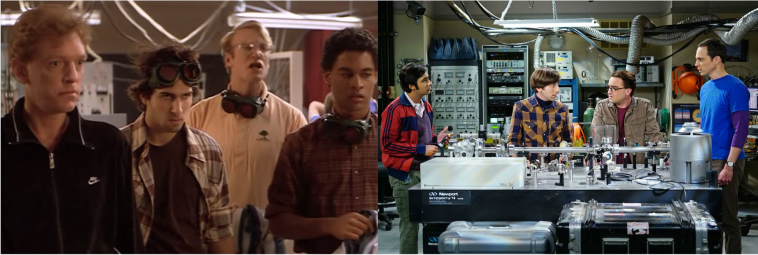Director- Mika Ninagawa (Japanese- Ninagawa Mika)
Writers- Kyôko Okazaki (source material by), Arisa Kaneko

Ninagawa Mika’s Helter Skelter (2012) had me at its first loud shriek of 1970s German opera punk. Its opening is a stunningly brash experience introducing the film’s key themes: unattainable beauty standards, feminine fascination, bio-commerce futures, cosmetic surgery, fragmented femininity, and capitalist patriarchy. All packaged up in intentionally feminist aesthetics. Set in the Shinjuku high fashion district of Tokyo, life goes by in a blur of camera flashes, screens, and fickle teen dreams.
Helter Skelter revels in excess and artifice, opening with an assault of cinematic technique and swirling references to Kusama Yayoi, Okazaki Kyôko’s original Manga (1995-6), and Ninagawa’s own personal style and photography. This is all accompanied by the histrionic vocals of the ‘Godmother of German Punk’ Nina Hagen (and band) and their 1978 track ‘Naturträne’ .Here we find J-idol Lilico (Erika Sawajiri) swathed in theatrical bandages and shot in a series of body-parts close-ups. She is revealed in cut scenes reminiscent of the graphic pop-art production design of Obayashi Nobuhiko’s Hausu (1977), the mirror installations of Kusama, and the dreamscapes of Dalí’s work on Spellbound (Hitchcock,1945). It’s a lot and I loved it (but maybe it didn’t need to go on for over 2 hours, I appreciate a tightly edited/short-ass movie).
Opening with a montage of teenagers navigating overstimulating beauty products and giggling about their nails and lashes, whilst the film is universal, Ninagawa creates a strong critique of beauty culture in Japan specifically.
Lilico is a superstar model who is revealed to have had full body plastic surgery; her youthful appearance is maintained with regular procedures. As her agent (Momoi Kaori) proudly explains, “only her eyeballs, her ears, her fingernails, and her pussy are real.” She is fragmented into pieces, a ghost in a shell whose body is an assemblage of replaceable, rejuvenatable parts that can be removed, improved and sold. Skin, muscles, and fluids are grafted, inserted, and injected into Lilico (and other women like her) to attain bodily perfection. But she is the (monstrous, Frankenstein-style) product of a collaboration between her agent ‘mama’ (momager), and Dr Waku (Mieko Harada). Lilico was ‘discovered’ on the streets of a small town working as a prostitute and then reimagined and managed as a star.
Lilico’s hyper-sexy but saccharine J-idol persona is quickly shattered in the first behind-the-scenes seqeunce where the bratty ego-centric diva spits water into the face of her long-suffering assistant Hada (Shinobu Terajima). Hada is a 35-old year woman who is seemingly obsessed with her young (?) charge and given her own introduction through cross-cut scenes with her scrounging, drip-of-a-boyfriend Shin (Ayano Gô). He is too easily seduced by Lilico as Hada watches powerless. Lilico uses her manufactured beauty and fame to dominate people both sexually and professionally.
In Helter Skelter, women are victims and villains but more often a complex mix of both. Lilico is victim of rampant commercialism and the greed of women like ‘mama’, but she also rapes her assistant – forcing Hada to cunnilingue her and participate in drug-fueled threesomes. Hada and Shin are also coerced into vitriolage when Lilico orders them to disfigure her affluent heir boyfriend’s fiancé with acid and cut open her rival, Kozue’s (Kiko Mizuhara) face. Both of these women are defined by their naturalness: the apparently ugly but wealthy fiancé and the natural beauty of the misanthropic Kozue who acknowledges her own transient position in the J-idol industry.
‘We will be forgotten; we are machines for the processing of desires… desire does not care; it just keeps on with another name and another face’ – Kozue (Kiko Mizuhara)
The movie’s subplot is an investigation led by Detective Asada (Nao Ōmori) that reveals that the Waku’s cosmetic clinic is harvesting its injectables and implantables from black market babies and children’s bodies. The detective pursues Lilico in connection to a series of suicides related to transformative surgeries performed at the clinic she attends. Asada refers to Lilico by the double-meaning nickname ‘Tiger Lily’ highlighting her wild unpredictability that is obscured by the delicate petals of her beautiful exterior*. In order for the women modified at the clinic to retain their perfected exterior they must keep returning for top-up surgeries and DNA altering injectables. Failure to keep up with payments leads to a reversal of effects, patches of necrosis, hair loss, and mental disassociation and deterioration.
In the pursuit of the ‘perfection’ these women literally consume children. The raw materials are revealed to be made from trafficked, kidnapped babies as modern day witchcraft meets modern slavery. Child organ trafficking was once an urban legend but as demand for organs rises the most vulnerable become the target of criminals looking to profit off selling organs. Currently, 150,000 transplants are performed annually worldwide; this meets less than 10 per cent of the global demand. By adding in imagined medical/cosmetic procedures that use tissue, cells, and organs from the young, Helter Skelter forces attention on the issue of consent and the ethics surrounding viewing people (through the extreme of children) as a resource.
Furthermore, the film uses child parts to represent strongly paedophilic elements of beauty standards. In conjunction with the montage opening, teenage girls (children) are posited in a liminal position between their youth and societally and industrially enforced adultification.
In another bio-commerce movie I’ve looked at previously, Danisha Esterhazy’s Level 16 (2018, Canada), young women are raised to be donors. They are not spare-parts-humans like the clones in Kazuo Ishiguro’s novel Never Let Me Go (2005) or illicitly procured as we see in Helter Skelter, but rather carefully cultivated skins sold to the wives of the wealthy. But where Level 16 positioned men as a driving force of female mutilation and impossible youth, Helter Skelter focuses on the women who have internalised the patriarchy. Women who literally absorb the life force of children to maintain their youth and power . They are presented as successful women who have reached their positions of power by using, consuming, and abusing other women.
The film is fascinated by these women, and the director positions herself – as a commercial fashion photographer – as part of the problem. Ninagawa Mika/MikaNina is a prolific visual artist producing commercial, fashion and art photography, gallery installations and exhibitions, films, and music videos. Her work is often explicitly self-referential and she inserts herself into Helter Skelter in several cameos aggressively photographing Lilico. Ninagawa proudly asserts her role as the creator and director, usurping her actual cinematographer (Sōma Daisuke) through the literal presentation of herself holding and controlling the camera and thus the gaze over Lilico.
In stark contrast to many of the women I look at as part of the #WomenMakeSF project, and even more so as a Japanese woman artist, Ninagawa actively engages in discussions of a gendered gaze and the woman’s perspective in her work. Ninagawa was a key figure in the 1990s, reductively termed by critics, onna no ko shashin (‘girly’/girls’ photography) that challenged the status quo of male-dominated photography with intimate images of domestic life and women’s portraits. Helter Skelter is explicitly presented as ‘A Mika Ninagawa Film’ and the focuses on the woman’s perspective and desires even when the’re repulsive.
Mika Ninagawa’s fashion photography- sourced from Pinterest
Ninagawa produces a pretty faithful adaptation of mangaka Okazaki Kyōko’s Helter Skelter (1995-96). Herself a key figure in Josei manga (marketed at adult women), Okazaki made her debut in Manga Burikko, a hentai anthology magazine. Explicit sexual content, avante garde imagery, and biting social critique are entwined across her work. Just before the Bubble Economy burst, Okazaki published Pink (1989) about a Tokyo office girl called Yumiko who moonlights as a call girl to care for her pet crocodile, Croc. Helter Skelter (1995) is her most famous work and encapsulated the economic anxieties and disillusionment felt by the Lost Generation.
In an era of increasing accessibility to weight-loss drugs, ever-advancing plastic surgery procedures and new obsessions with ‘clean girls’ and rigorous daily routines, Helter Skelter has found a new audience. But like its protagonist, the film is most notorious once it is cut into pieces; it has gained most of its Western notoriety from TikTok, Instagram and Pinterest. As the Lipstick Index is rising, women seek out snippets of luxury and beauty amongst the depression.
Extreme cosmetic surgery is, in part(s), presented as a form of mutilation in Helter Skelter where the body is sometimes literally broken up and reformed. It questions what it is to be authentic, to be human in the face of such opportunity and pressure to look a particular way. As a surgical process, Lilico’s cosmetic procedures have made her a profitable object for others selling not only her image but also an array of products and experiences. But it is only through an act of self-mutilation that Lilico is finally able to be free – in a press conference responding to the revelation that she is fully modified she stabs herself in the eye thus withdrawing from the public eye. Is she dead and gone? It’s a mystery until in the final scenes, where Kozue is seen visiting an underground club following another successful campaign shoot to discover that the queen of underground burlesque club is Liliko. Staring directly into the camera lens with one eye she looks back at the audience, now controlling the gaze that once controlled her.
* It is not, as I was trying to retrofit, a reference to J. M. Barrie’s Peter Pan. Similarly, the film’s title has nothing to do with the British fairground ride but the original meaning of the phrase: disorderly haste and confusion.
Editors Note-
For another excellent body horror from Japan, I personally recommend Junji Ito’s influential manga Tomie. Following a mysterious succubus who compels men to murder her through mysterious psychological powers, the comparisons between Tomie and Lilico are evident.
































































